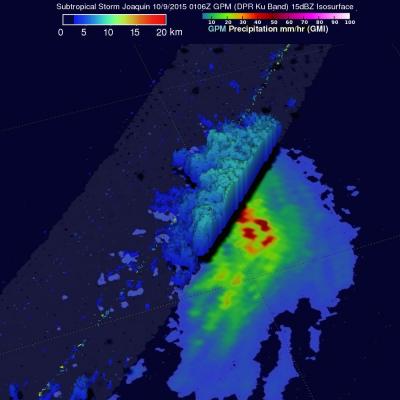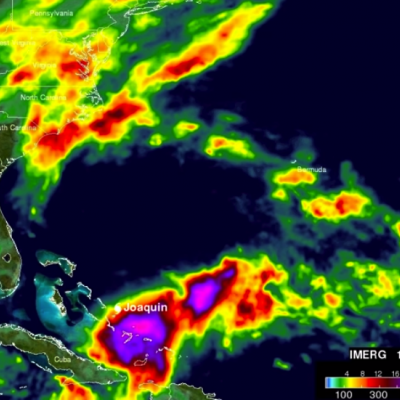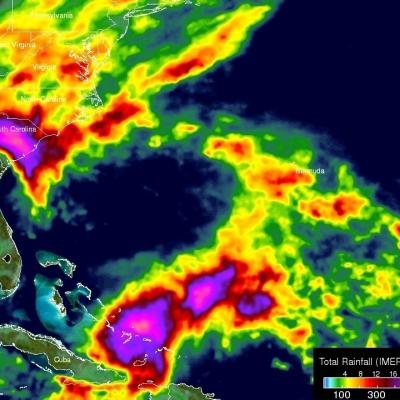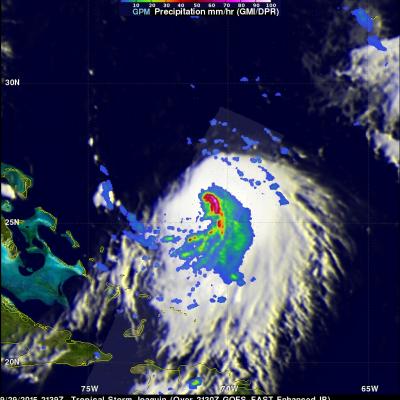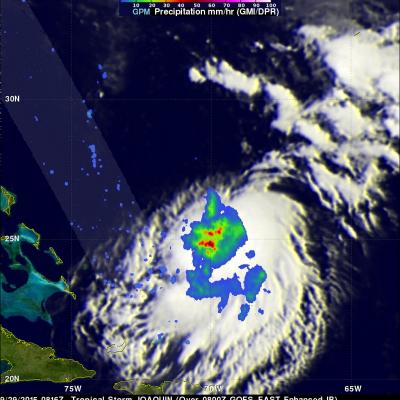Subtropical Storm Joaquin Heads For Europe
Hurricane Joaquin became subtropical while traveling over the cool waters of the North Atlantic. The low pressure center that was once powerful hurricane Joaquin was viewed by the GPM core observatory satellite on October 9, 2015 at 0106 UTC. The low pressure center was moving past the Azores toward landfall in Portugal. GPM's Microwave Imager (GMI) and Dual-Frequency Precipitation Radar (DPR) instruments measured precipitation within the low pressure center. The most intense rainfall was located northeast of the center of the low and was falling at a rate of over 54 mm (1.1 inches) per hour


